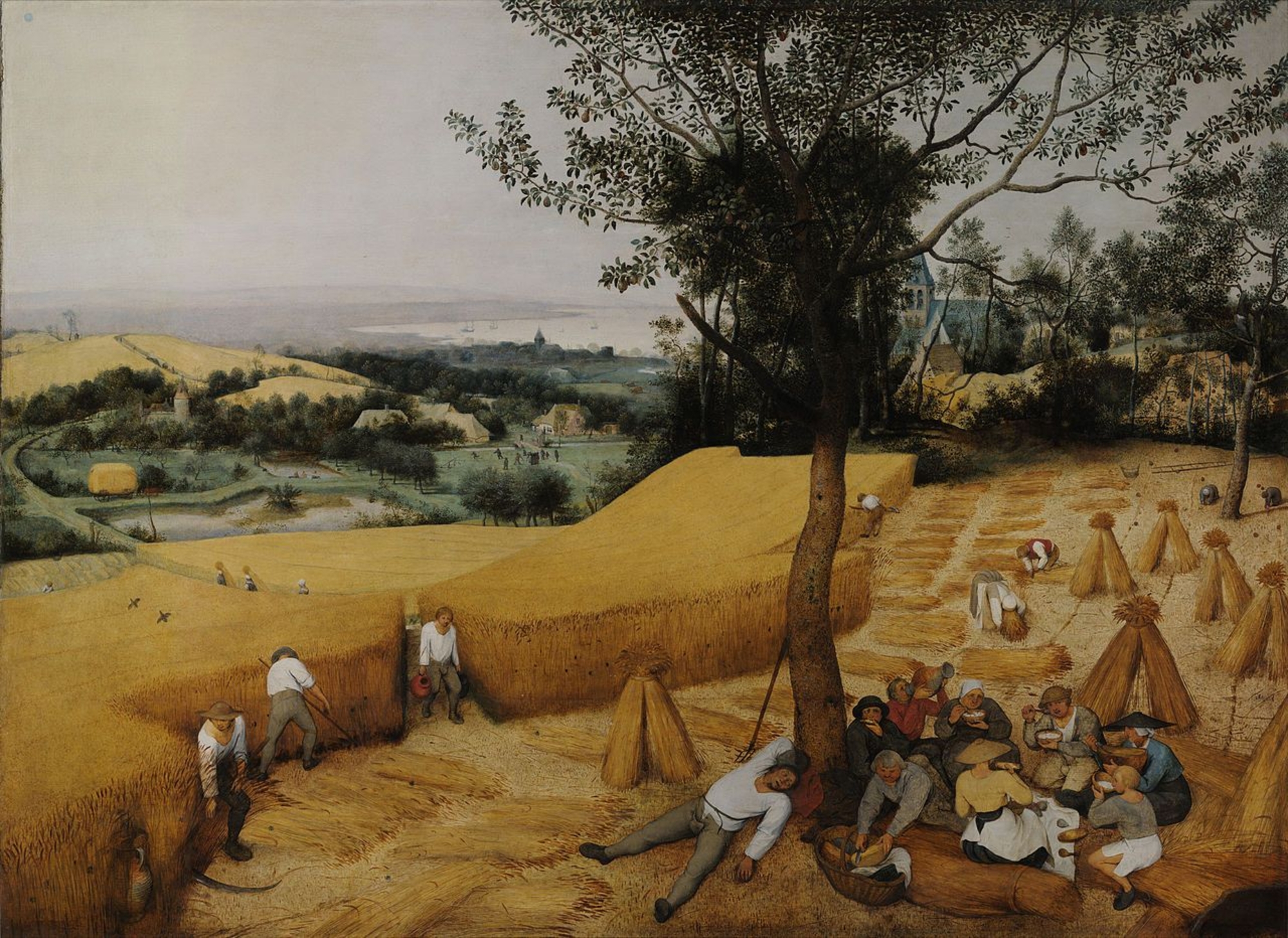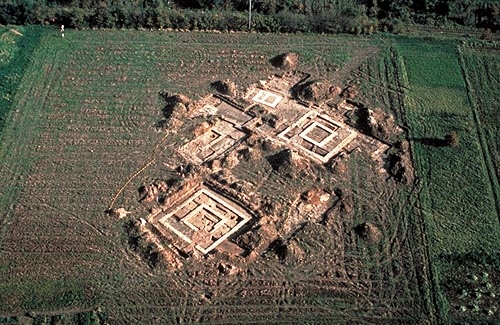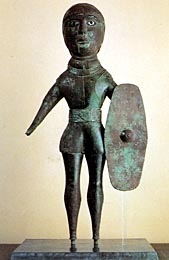- Home
- Discoveries
- Gallic and Gallo-Roman sanctuaries
- The sanctuaries
G.-P. Woimant's excavation of the temples at Estrées-Saint-Denis (Oise).
The fanum and its context
At first sight, seen from the air, the fanum appears to be an isolated structure. In reality, however, successive fly-overs allow one to see that this is not the case at all. There are other small foundations, which no doubt correspond to various edicules built of wood and earth, and which are difficult to make out. In certain cases, the presence of a circular enclosure suggests the survival of a Gallic religious structure. Most of the fana that have been discovered from the air, and subsequently excavated, are located on the sites of previous places of worship. Nearly all are located on hills above a Roman road, and sometimes — as at Saint-Maur-en-Chaussée (Oise) — they are directly in line with it.
At Saint-Maur-en-Chaussée (Oise), the sanctuary was directly in line with the Roman road, which was built around it.
The large sanctuaries
Prior to aerial prospecting, large sanctuaries from Antiquity were almost unknown. At Estrées-Saint-Denis (Oise), faint traces of two fana were identified from the air, but they were so illegible that one would have thought they had been completely leveled off. However, meticulous excavations showed that this was not the case at all. A total of nine successive states were uncovered, extending from their pre-conquest construction (Woimant, 1985), to a final state dating to the Late Empire. Another exception find is the vast sanctuary at Fluy (Somme), in which a temple and a theatre can be seen.
The sanctuary at Saint-Maur-en-Chaussée (Oise) was not unknown, but a combination of aerial prospecting and excavation have revealed its complexity, as well as the presence of a 70 X 80 meter oval gallery that surrounded the temple. Once again, this ensemble was built on the site of a Gallic place of worship (Brunaux, 1986). A bronze statuette, the so-called "warrior god", was found at this site. Aerial photographs have revealed the presence of a theater and, on the other side of the temple, vast and confusing foundations, probably belonging to a vicus. This is the same for the enormous sanctuary photographed at Vermand-Marteville (Aisne) where, unusual in a set of fana structures, no theatre has been found.
Gallic warrior god from Saint-Maur (Oise), 1st century CE. Photo: Beauvais, Musée départemental de l'Oise-Piero Baguzzi.



